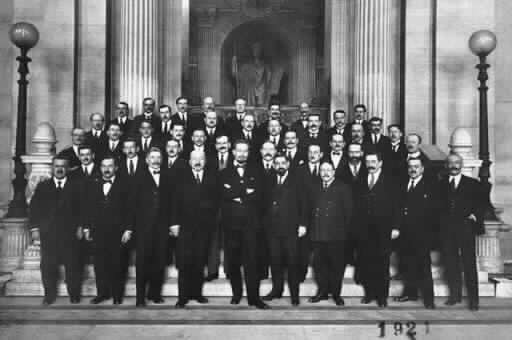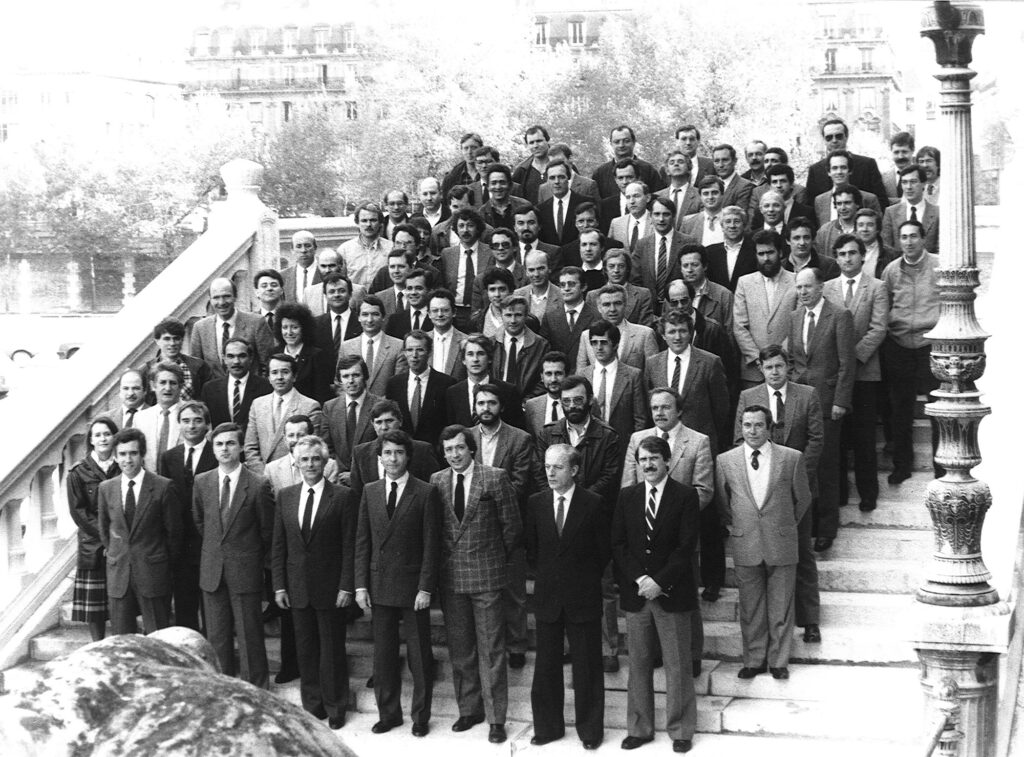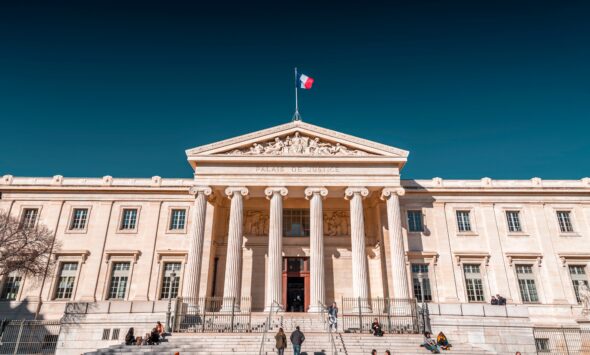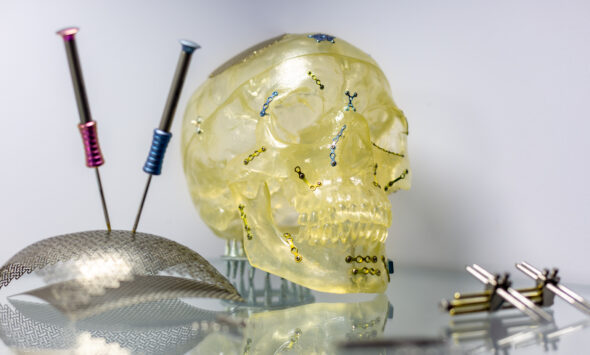Interview – As the French justice system is about to establish a specialized Cold Case unit in Nanterre on March 1, 2022, the head of the Criminal Brigade of the Paris Regional Directorate of Judicial Police, General Commissioner Michel Faury, reflects on the growing strength of his unit dedicated to unresolved cases.
Could you give us the legal definition of a “Cold Case”?
Strictly speaking, there is no legal definition of the term. However, one may consider it to be a case in which the criminal nature of the facts is either established or strongly suspected, which remains unresolved both judicially and investigatively, is not time-barred, and for which the perpetrator(s) have yet to be identified.
How many “active” unresolved cases are currently handled within the Paris Criminal Brigade?
Following the recent outcome of an investigation that led to the identification of the perpetrator of a series of crimes committed in Paris between 1986 and 1994, the number of unsolved cases within the Criminal Brigade has slightly decreased. As of today, there are approximately 65 cases, about fifteen of which are subject to regular investigative work, depending on the criteria applied.
Within the Criminal Brigade, do you have teams specifically dedicated to solving Cold Cases?
Each general crime group of the Criminal Brigade retains older cases, which are subject to renewed investigation whenever a new lead emerges. Nevertheless, a specialized unit dedicated to this type of case was created in 2015 and was significantly reinforced before the summer of 2021. This is the UAC3 (Unit for Criminal and Behavioral Analysis of Complex Cases). Composed of six staff members, it is led by a highly experienced officer and also includes a psycho-criminologist. It is entrusted with the most complex unresolved criminal cases.
That being said, the unit is not intended to work exclusively on Cold Cases; they represent only part of its activity. While it focuses on older cases, it does not wait for the judicial authorities to potentially close a case before becoming involved. On the contrary, it conducts or oversees long-term investigations, ensuring that every lead has been explored and that any new information is addressed. The unit also frequently serves as an advisor to colleagues and to its hierarchy within its field of expertise.
One of the main reasons for assigning a case to this unit is to preserve institutional memory, despite the turnover of investigators who may have worked on it in the past. Moreover, the investigations carried out over time, together with the retention of the case file within the service pending the emergence of new evidence, also serve to delay the statute of limitations for as long as possible.
Do the officers in charge of these cases receive specialized training?
No, there is no specific training upon joining UAC3. The Criminal Brigade recruits men and women who already possess solid professional expertise, who have a genuine interest in criminal matters, and who are motivated to develop further in an increasingly technical field. UAC3 brings together profiles suited to the needs of such a specialized structure: all of them are highly experienced professionals who have proven themselves and who master the intricacies of criminal investigation. Mentorship provided by senior members of the group then helps to train newer investigators according to operational requirements.
Furthermore, a certain level of professional maturity is required to join the unit, as investigators must have the mental resilience to work on cases where they have never seen the crime scene and on which other investigators have already worked. In addition, training in criminal analysis is currently being offered by a former officer of the unit, and one of UAC3’s investigators is currently undertaking this advanced training program.

What methodology do you use to make progress effectively on such cases?
The variety of case files means that no predefined method exists when reopening an investigation. The strength of UAC3 lies in offering a multidisciplinary approach that combines behavioral analysis, the use of computer-based tools for criminal analysis, and a comprehensive review of the entire procedure from a fresh perspective. This examination, viewed from multiple angles, is punctuated by exchanges between the various stakeholders and often results in several reviews entrusted to senior officers of the unit or to civilian reservists.
Sometimes, in more informal terms, reference is made to the so-called “steamroller method” of the Criminal Brigade. This approach applies perfectly to the handling of Cold Cases, insofar as no lead is neglected. Each hypothesis is examined until it can be determined that it bears no connection to the investigation. This process may sometimes take years.
What are the main difficulties encountered?
The main difficulties when working on a Cold Case are:
- The lack of material evidence still available when a previously unexplored lead emerges.
- Similarly, missing aspects in investigations conducted at the time, for example in the field of telecommunications (such as cell site data that were never preserved).
- The quality of testimonies after so many years (faded memories, deceased witnesses, etc.).
- The often disastrous preservation of exhibits, or even their destruction before the statute of limitations for the investigation expires.
- The identification of case files that may be entrusted to us but were not always initially handled by the Criminal Brigade, which therefore requires cooperation and vigilance from other services so that they remember to refer them to us.
- Turnover, both among investigators and magistrates, which inevitably results in a loss of institutional memory.
How is cooperation between Police and Justice coordinated in such cases?
The Criminal Brigade maintains a relationship of trust with the judicial authority. Our investigations are conducted over the long term when necessary, and we have the appropriate resources at our disposal. Magistrates therefore generally turn to us when an old case needs to be revisited. Individual, case-by-case discussions are preferred. Greater recognition of Cold Cases, with the creation of UAC3, places us in an ideal position within the jurisdiction of the Paris Police Prefecture to serve as the privileged point of contact for magistrates dealing with such cases. This is particularly relevant with regard to the future Cold Case division.
The process may also involve a preliminary assessment of the case in order to determine the veracity of the alleged facts and the amount of work required, thereby allowing the most suitable unit to be designated.
Furthermore, these relationships of trust facilitate the assent of magistrates when investigators request authorization to pursue new investigative measures, either due to the emergence of new elements or to advances in forensic techniques.

What resources do you have at your disposal?
The available resources are those of the Criminal Brigade, including the ability to mobilize a large number of investigators when deemed necessary.
- A case review from different perspectives (investigator’s analysis and behavioral analysis), with the support of criminal analysis when required.
- A close and longstanding relationship with recognized experts in various technical fields supporting investigations (genetics, forensic medicine, anthropology, odontology, etc.).
- A sustained commitment of human resources, in particular the dedication of investigators assigned to this mission (UAC3), who can at any time establish links between cases entrusted to us and facts investigated by other services.
- Electronic Document Management (GED) and operational documentation, which facilitate research and cross-checking.
What are the technical and scientific advances that make the resolution of Cold Cases possible?
Addressing Cold Cases means, above all, recognizing that one is looking back into the past, which means relying on the resources that existed at the time of the events (no video surveillance, no telecommunications data, unless preserved, etc.).
However, when it comes to the exploitation of items seized at the scene, provided they were preserved under proper conditions, it is possible to consider complementary investigations in various fields:
- Significant advances in forensic science (genetics, familial DNA searches, etc.), making it possible to re-examine certain exhibits in order to extract genetic traces that could not have been revealed using techniques available just a few years earlier.
- Use of more advanced tools in telecommunications analysis.
- Use of digital data analysis tools.
- Possibility of reprocessing the case file with the support of criminal analysis.
- Use of open sources and the Internet.
What are the major legal developments in France governing the handling of unresolved cases?
The handling of Cold Cases is not subject to specific legal provisions but falls within the framework of ordinary criminal investigations. The key legal development concerns the reform of the statute of limitations in criminal matters, enacted on 27 February 2017.
It is also worth noting the importance of the retention periods in the Automated Fingerprint Database (F.A.E.D.) and the National Automated DNA Database (F.N.A.E.G.) for unresolved traces or recorded individuals (decrees of 2 December 2015 and 29 October 2021).
The creation of a Cold Case division within the Ministry of Justice should also facilitate the identification of cases that could be reopened and enable the establishment of cross-case connections.
Are there international collaborations, or exchanges of knowledge and expertise, aimed at maximizing the resolution of investigations?
To our knowledge, there are no international structures for the sharing of technical expertise or operational exchanges specifically dedicated to Cold Cases—not even at the European level.
In these cases, we rely on the same tools as in all other criminal investigations whenever an international lead arises (for example, fingerprint and DNA exchanges under the Prüm Treaty, bilateral exchanges via Internal Security Attachés (A.S.I.), and the involvement of INTERPOL and EUROPOL).

What elements allow an investigation to be reopened?
An investigation may be reopened once new elements are available that are likely to move the inquiry forward. This decision rests exclusively with the judicial authority, but the Criminal Brigade is generally proactive in making proposals. Scientific progress, and the hopes it raises, may sometimes be considered sufficient to obtain such a reopening, though each case is assessed individually. The creation of the judicial Cold Case division should also help shape the interpretation of what constitutes “new evidence.”
UAC3 rarely encounters this type of difficulty, as most unresolved cases are retained by the Brigade and are regularly reviewed. They are kept not only in anticipation of new elements being brought to our attention (e.g., a denunciation, identification of DNA found at a crime scene through a sample taken from a suspect in another case, a link with a new investigation, or a connection with a suspect identified elsewhere), but also in anticipation of a new investigative idea that could relaunch the case.
Do you have any significant cases you could cite?
A few examples may be mentioned:
- In a case of rape, or a series of rapes, based on the description and modus operandi of the perpetrator, a potential suspect is identified through searches in police databases such as CHEOPS or SALVAC. The judicial authority is then asked to reopen the case, with the “new element” being the identity of the suspect. The same reasoning applies when investigative research highlights another case whose elements are closely related. The request for reopening is justified by relevant factors (geographical area, type of victim, modus operandi, weapon used, etc.).
- The examination of a crime scene through judicial photographs, technical findings, and bloodstain pattern analysis may suggest that the victim was not killed where the body was discovered, but in another room of the residence. Nearby seized items, which were placed under seal but never subjected to forensic examination, then justify requesting a reopening to analyze exhibits located near the true crime scene.
- The late discovery of an exhibit: for instance, when cleaning the home of a murder victim, a witness accidentally uncovers a bloodstained knife hidden under a living room carpet in a cavity in the floor. The new element justifying the reopening is self-evident.
Is it more challenging to work on a Cold Case than on a recent case?
While the question is difficult to answer, it is undeniable that the work on older files requires particular qualities and involves specific challenges. One must be extremely patient, since—unlike investigations in flagrante delicto that can sometimes lead to rapid results—Cold Cases demand lengthy and complex inquiries (reconstructing the case file, locating witnesses, dealing with less precise testimonies, searching for exhibits). Working on Cold Cases means reimmersing oneself in the investigative methods and resources available at the time of the crime, which differ greatly from current means (no telecommunications data, no video surveillance, no digital evidence, etc.).
As for the exploitation of items collected at the crime scene—which may have survived over time—it faces the challenge of exhibit preservation and, more broadly, the loss of certain case materials.
It is also more difficult to take over a case that another unit or group was unable to solve. Investigators must demonstrate unwavering motivation and a strong sense of optimism.
Finally, the psychological burden must also be considered, and may take various forms: false hopes followed by disappointment when a promising lead proves fruitless; frustration at being unable to provide answers to the victim’s family; and so forth.
What mistakes should be avoided when working on such cases?
It is important to attempt to start afresh, without being “contaminated” by the leads and hypotheses considered by the initial investigators. While it is unlikely that new investigators would have exactly the same approach as their predecessors, it is imperative that they avoid forming an opinion too quickly and that they remain open to exploring every possible hypothesis.
From your perspective, what are the essential qualities of an investigator working on unresolved cases?
Investigators must be experienced and legitimate in the eyes of both their colleagues and the judicial authority. Patience and organizational skills are also indispensable, as one must immerse themselves in a typically heavy and complex case file, previously handled by others, and do so methodically, by involving various actors and partners in the criminal investigation (experts, psychologists, external investigators, etc.).
They must master all the intricacies of criminal investigation and its surrounding ecosystem in order to know “what to look for, and where to look for it.” Finally, humility is essential.
Tous droits réservés - © 2025 Forenseek


















